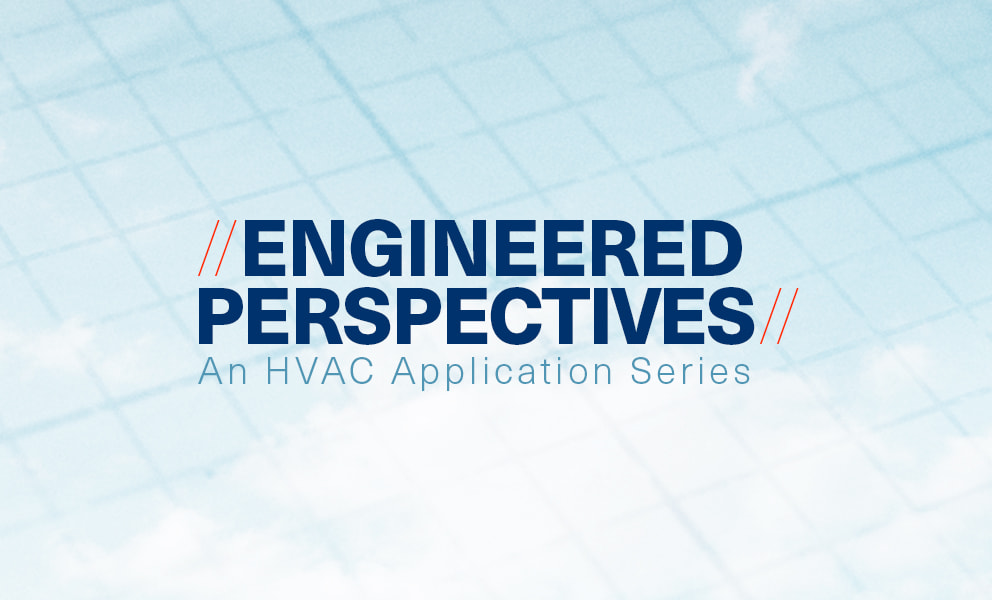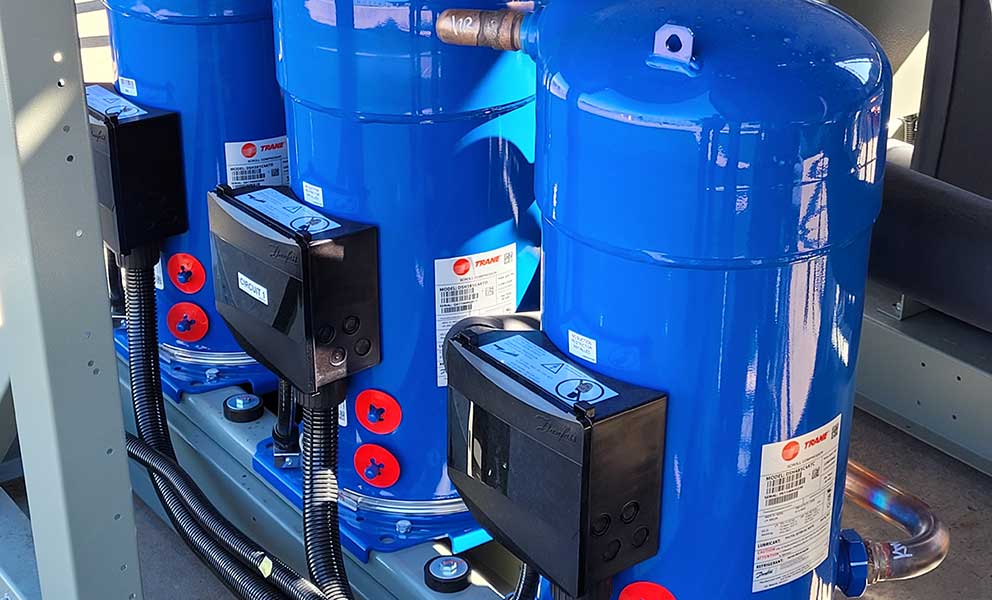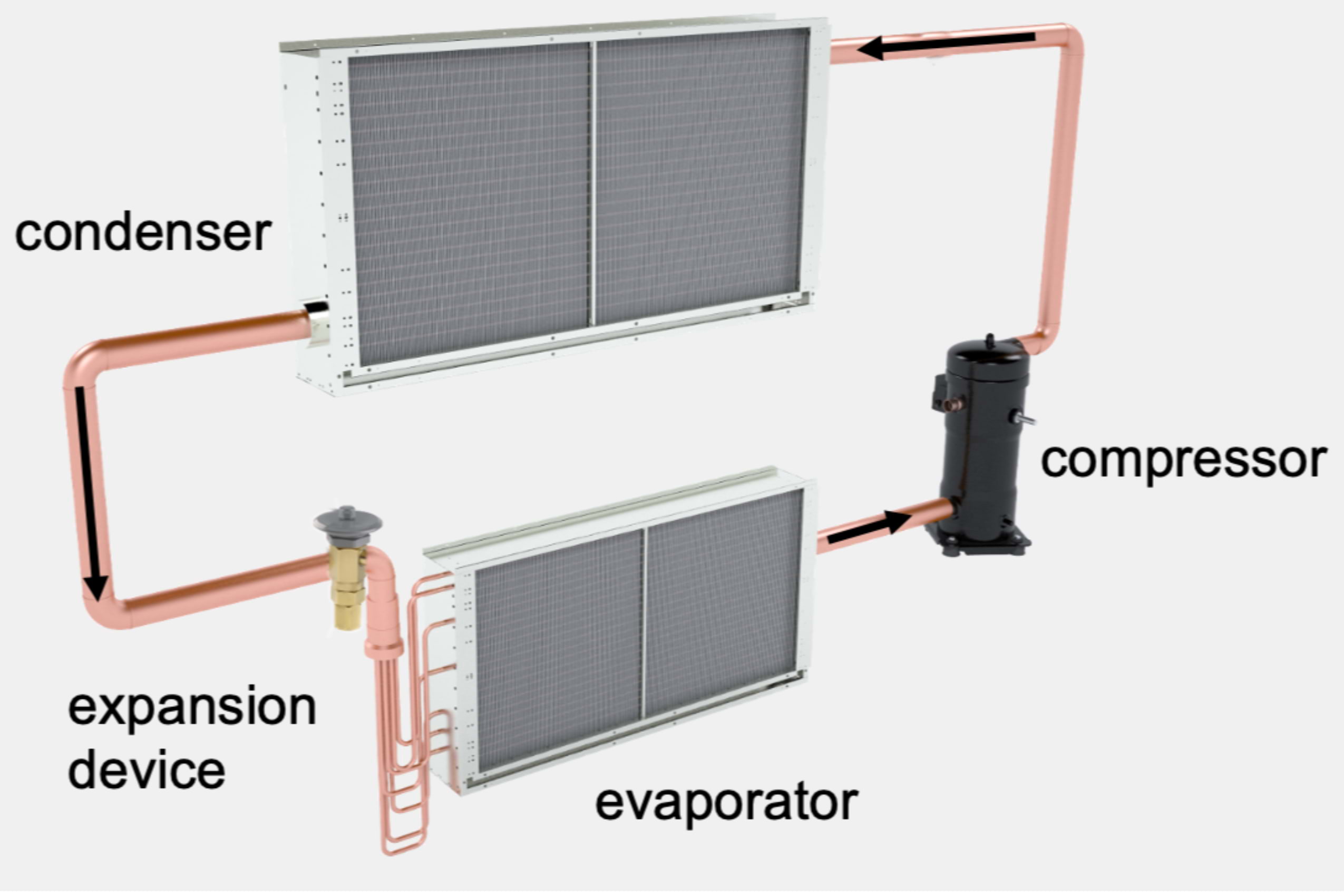
Myth: Heat pumps only provide heat.
Fact: Heat pumps can heat or cool.
Heat pumps work by pulling heat from the air or underground and using it to heat a building in the colder months. Heat pumps then flow in reverse and use refrigerants to cool a building in the warmer months.5
The reversible process, known as vapor compression, is what heat pumps rely on to heat or cool buildings.
Myth: Heat pumps do not work in cold weather.
Fact: Heat pumps perform well, even in cold temperatures.
Technological advancements allow heat pumps to work well below freezing outdoor temperatures, some even lower than 0°F. Like a hybrid vehicle, heat pumps equipped with auxiliary heat, known as dual fuel, use electricity as the primary heating method until the outdoor temperature drops to a certain set point, then shift to gas heat during the coldest periods. The changeover temperature from a heat pump to natural gas can be adjusted to occur between 45°F and 15°F depending on goals for balancing comfort, payback, and emissions reduction. Heat pumps are often used as part of a larger system that is designed to meet the needs of the climate and the building.
Myth: Heat pumps are too expensive.
Fact: Heat pumps are more expensive than common alternative heating systems, but incentives are available that make them attractive.
The Inflation Reduction Act (IRA) tax credit, Geothermal Heat Pump tax incentive, and local utility incentives are just a handful of the funding sources available to building owners. There are over 600 utility rebate programs nationwide, 249 of which cover heat pumps.6 The use of dual fuel, backup systems, "right-sizing" of equipment and identifying the right needs for a building, are all system strategies that can reduce heat pump premiums.
Myth: Heat pumps do not lower your energy bill.
Fact: Heat pumps can be up to three times more efficient than alternative electric heating methods.7 The cost of electricity and the fossil fuel heating alternative will determine the impact on your energy bill.
Heat pumps efficiently heat, and advancements in controls* allow for additional efficiencies. A more energy-efficient system may mean less energy is lost, and less money is wasted. Heat pumps can also be combined with gas heating allowing it to use the most cost-effective fuel available for its operating condition. A building’s energy bill will depend on local utility rates for gas and electricity, with some locations being more favorable.
*According to research conducted by the scientific teams of Project Drawdown, building automation systems (BAS) can boost heating and cooling efficiency by more than 20% and reduce energy use for lighting, appliances, etc., by 8%.8
Myth: Heat pumps are not better for the environment.
Fact: Heat pumps rely on electricity, an increasingly renewable energy source.
As more renewable energy is added to the power grid*, emissions from electric power use will decline. This means transitioning from fossil fuel-based heat to electric heat pumps helps to reduce indirect carbon emissions if the power generated comes from a cleaner source such as wind, solar, hydroelectric, or nuclear.1
*The impact depends on the carbon intensity of the local grid9, as there is a range of coefficient of performance values (COPs) you can achieve with heat pumps.
The electrification of heat is an important step toward decarbonizing building operations. Heat pumps offer an energy-efficient alternative to gas-fired boilers. Widespread adoption of heat pumps may have a significant impact on the reduction of carbon emissions, contribute to a cleaner power grid, and help to aid in accomplishing net-zero goals.
Trane is a world leader in energy technology and building solutions. Our team of experts work with building owners and engineers to access the space requirements and develop application-centric strategies while improving energy efficiency and sustainability, ultimately creating solutions that result in comfortable indoor environments. Trane provides continuous optimization and monitoring for end-to-end results. Contact your Trane representative today to develop a plan that fits your timeline, budget, and goals.
Decarbonization
- https://www.reuters.com/article/sponsored/the-important-role-of-heat-pumps-in-a-sustainable-future
- https://www.epa.gov/ghgemissions/sources-greenhouse-gas-emissions#commercial-and-residential
- https://www.iea.org/reports/installation-of-about-600-million-heat-pumps-covering-20-of-buildings-heating-needs-required-by-2030
- Ibid.
- https://www.masssave.com/en/business/rebates-and-incentives/heating-and-cooling/heat-pumps
- https://dsire.org/DSIRE.org
- https://www.energy.gov/energysaver/air-source-heat-pumps
- https://drawdown.org/solutions/building-automation-systems
- https://www.epa.gov/egrid/data-explorer
About the Authors
Jackie Sopko
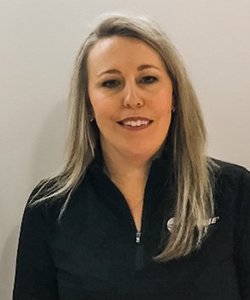
Jackie is the Chiller Commercialization Leader based out of Pueblo, Colorado. She has worked for Trane supporting chillers since 1997. During her time at Trane she has had a number of different positions; Technical Support Engineer, Water-cooled, Air-cooled and Arctic Chiller Product Manager. This gives her a great foundation to support customers.
Brian Fiegen
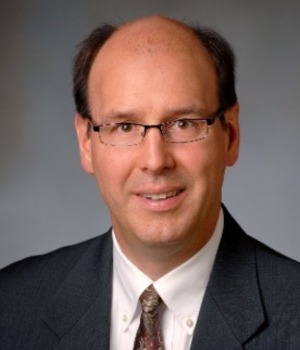
Brian is the Systems Development Leader for Trane in North America responsible for the development and commercialization of Trane system offerings. Brian’s early career was focused on airside products, systems, and controls. In this broader systems role, he has grown his background in chilled water, electrified hot water and VRF systems. Brian is a 40-year industry veteran, all with Trane. He is a member of ASHRAE and earned his BSME from South Dakota School of Mines and Technology in Rapid City, SD.
Eric Sturm

Eric joined Trane in 2006 after graduating from the University of Wisconsin – Platteville with a Bachelor of Science degree in mechanical engineering. Prior to joining the Applications Engineering team, he worked in the Customer Direct Services (C.D.S.) department as a marketing engineer and product manager for the TRACE™ 700 load design and energy simulation application.

































































































